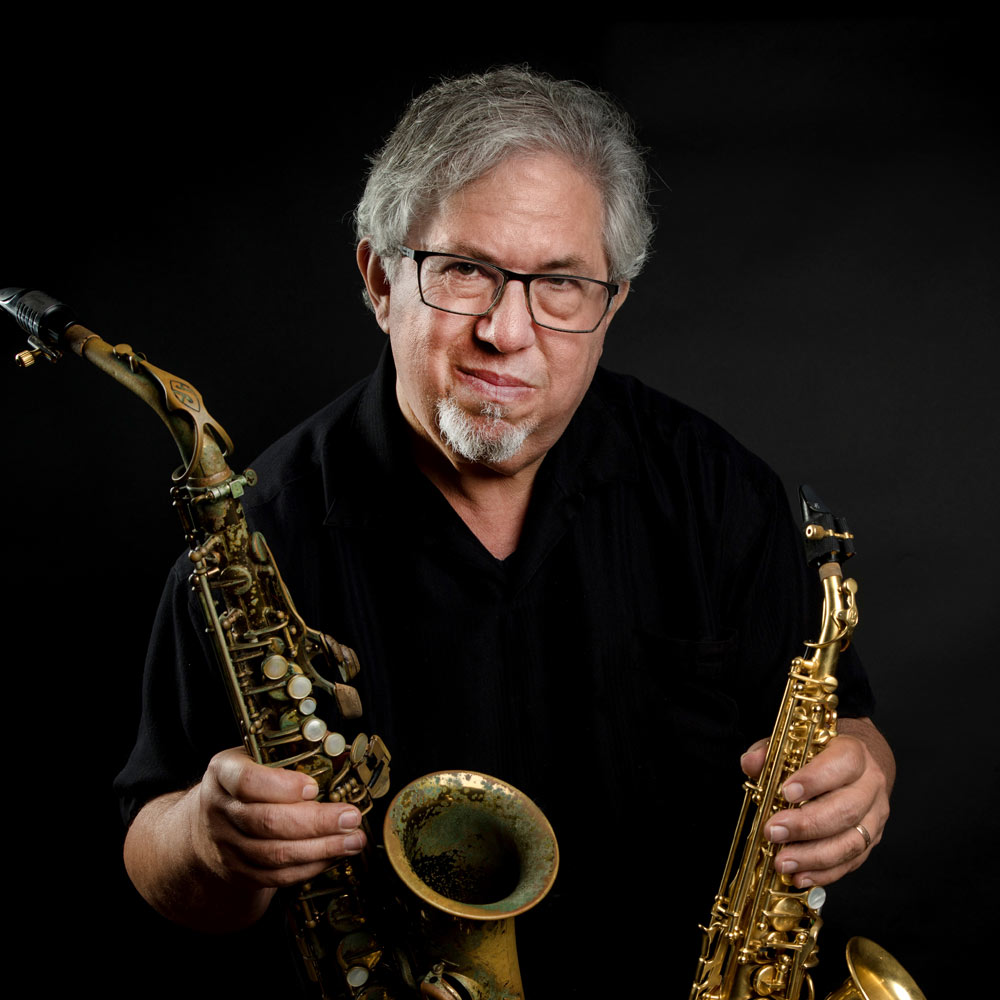
Paul Cohen’s OF LIGHT AND SOLACE highlights music by several 20th century composers whose work is deeply engaged with both the tradition and innovation of classical music. Evocative, contemplative, and teeming with emotional depth, these works explore and expand upon the liturgical canon, offering instrumental expressions in Gregorian Chant, fresh takes on the iconic Amazing Grace, and more.
Today, Paul is our featured artist in the “Inside Story,” a blog series exploring the inner workings and personalities of our composers and performers. Read on to learn about his various passions outside of music, from sports to cinematic history and more…
If you could collaborate with anyone, who would it be?
I would love to collaborate with the Cleveland Orchestra, Juilliard String Quartet, American Brass Quintet, or Imani Winds.
Take us on a walk through your musical library. What record gets the most plays? Are there any “deep cuts” that you particularly enjoy?
I have a vast and eclectic library. I’m often listening to music of Samuel Barber, Bela Bartok, and Charles Ives and Renaissance and Medieval music along with Paul Desmond and the Dave Brubeck Quartet in addition to the Paul Winter consort. I also listen to a lot of American classical music of all genres.
What emotions do you hope listeners will experience after hearing your work?
For OF LIGHT AND SOLACE, I’m hoping the contemplative, reflective aspect of much of the music will provide a meaningful respite from life’s daily challenges. Also, there is a deeper meaning in listening to the works of the composers who perished during the AIDS epidemic. The music — especially the programmatic nature of the Hampton — is highly impactful and relevant today.
How do you prepare for a performance?
For unfamiliar or new music, I first start with intensive score study without my instrument. I also familiarize myself with the composer’s music, or his style by listening either to their music or music of others related to the musical style. My technical preparation is to start slowly and gradually build control, tone, and speed to where it is always a musical expression. Any shortcut leads to technical performances without musical ideas or expression, undermining the musical intent.
What are your other passions besides music?
Environmental concerns, biking, baseball, table tennis, and history of cinema.
What’s the greatest performance you’ve ever seen, and what made it special?
The greatest performance I’ve experienced while not performing was an incredible rendition of Karl Husa’s Music for Prague 1968 by the Baldwin-Wallace wind ensemble. The ensemble was fantastic, the hall resonant and vibrant, and the conductor demanding and insightful. Karl Husa was in attendance. The visceral, emotional, and dramatic input was so palpable, so visibly and physically deeply moving, so emotionally and spiritually cathartic and visible, that it made an unforgettable impact and indelible impression about the power and value of music.
What musical mentor had the greatest impact on your artistic journey? Is there any wisdom they’ve imparted onto you that still resonates today?
I’ve had several musical mentors whose ideas have become seminal to my musical life. Galan Kral, my college saxophone teacher, for the importance of beauty of tone everywhere all the time, as well as providing a foundation of technique that is professionally lasting. Joe Allard for incredible insights on how to play the saxophone and for revelations in understanding tone production. Sigurd Rascher for living a truly artistic, ethical, and humanistic life as a concert saxophonist with uncompromising standards. Henry Schuman, a consummate chamber musician and oboist, for incredible insight into how to understand music, and the musical importance of exactitude of execution, especially with the infinite variety of articulation.

Paul Cohen is a sought-after saxophonist for orchestral and chamber concerts and solo recitals. He has appeared as soloist with the San Francisco Symphony, Richmond Symphony, New Jersey Symphony, Charleston Symphony, and the Philharmonia Virtuosi. His many solo orchestra performances include works by Debussy, Creston, Ibert, Glazunov, Martin, Loeffler, Husa, Dahl, Still, Villa-Lobos, Tomasi, and Cowell. He has also performed with a broad range of orchestras, including the New York Philharmonic, Metropolitan Opera (NYC), American Symphony Orchestra, Cleveland Orchestra, Santa Fe Opera, New Jersey Symphony, Oregon Symphony, San Diego Symphony, Long Island Philharmonic, Group for Contemporary Music, Greenwich Symphony, and New York Solisti.

